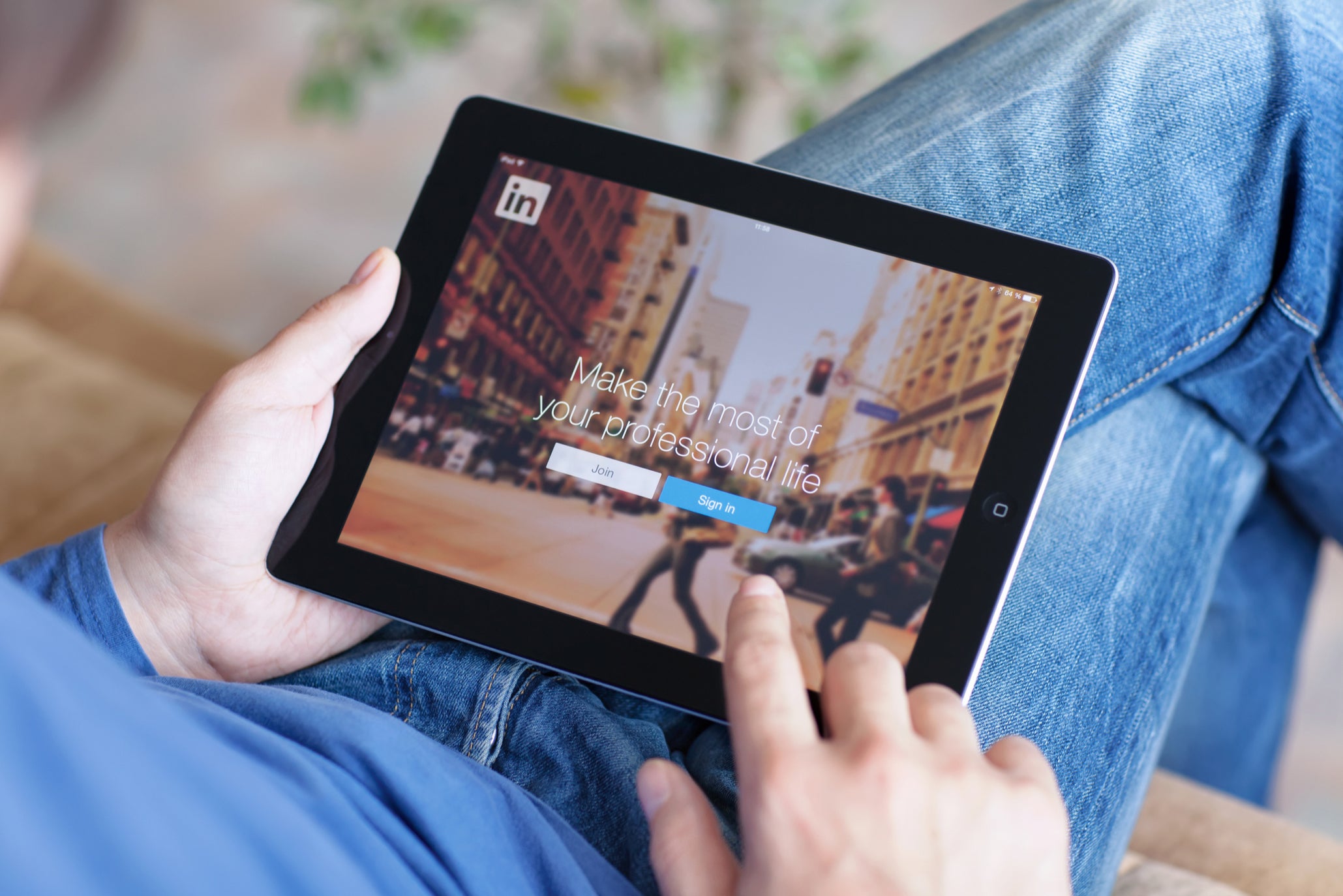If you’ve ventured over to LinkedIn recently, you might have noticed that things have got a bit, well, weird. Time was when the work-focused social media platform was somewhere you’d scroll through job listings, add details of your promotion a few months after the fact and then wait for the “Kudos to you!” comments to come rushing in from someone you met in freshers’ week (who has precisely zero bearing on your professional development). You might have received the odd enquiry from a recruiter or, if you possessed Apprentice candidate levels of keenness, fire off a few “let’s connect” messages to people in your industry. It was all pretty staid and formal: LinkedIn felt a bit like the boring older brother to more in-your-face platforms such as Instagram and Twitter.
But now, the atmosphere has changed completely. The straightforward job updates have been drowned out by a wave of long, meandering posts, in which managers and productivity coaches and C-suite execs share emotion-laden anecdotes from their personal lives, only to give you whiplash when they switch gears to tell you how these events taught them something about leadership principles or management consultancy. Romantic relationships, serious illnesses, cute things their children may or may not have said: nothing is off limits when it comes to mining your life story for Diary of a CEO-worthy business aphorisms. What’s arguably even more head-scratching is that posts of this genre regularly clock up thousands of likes and shares. LinkedIn, it seems, is now firmly in its cringe era. So how did we get here, and is this strategy of relentless oversharing now the new normal for networking?
LinkedIn launched in 2003 (yes, it predates Facebook and even MySpace) and remained pretty uncomplicated in its remit as a space for workers to look for new jobs and show off their CV to potential bosses. Of course, you’d see the odd user monologuing about their journey through business adversity, but they felt like the exception rather than the rule. Plus, they tended to be people you already knew, rather than random productivity coaches cropping up unsolicited in your feed. The average LinkedIn persona tended to be a bit like the version of you that spoke in big meetings at work: a bit politer and more prone to using bulls**t jargon to fill dead air.
But a definite shift seemed to take place during the pandemic. Many of us ended up working from home for the very first time, blurring the lines between our professional and personal lives (even on an all-company Zoom call with a lofty CEO, you might hear a dog barking in the background or see a kid accidentally wander into view). As everyone struggled to make WFH work, posting stories online about lockdown experiences became an easy way to humanise your professional persona by sharing a bit of vulnerability. Some people ended up facing redundancy or job insecurity: instead of just looking for vacancies on LinkedIn, they might write candidly about their situation and hope that it might catch the attention of a potential employer.
Bringing a modicum of emotion into the (online) world of work wasn’t necessarily a bad thing. But when people started to realise that opening up resulted in LinkedIn clout (and more eyes on their business as a result) things started to get truly unhinged. In 2021, LinkedIn unveiled their new “creator mode”, a feature that helped budding LinkedInfluencers build their following by amplifying their reach outside their pre-existing networks. Since then, 18 million users have opted in, and have made some seriously head-scratching “content” in the process; it proved so popular that its features are now available as a default.
One of the most notorious viral posts came in 2022, when a marketing company CEO named Braden Wallake decided it was a good idea to share a selfie showing him crying after making two members of staff redundant. “This will be the most vulnerable thing I’ll ever share,” he wrote, before going on to make their lay-offs all about him. It was a bizarre misstep, but it didn’t do much to change the general tone over on LinkedIn. Workers posted photos of themselves sitting in hospital beds clutching laptops to prove their dedication to the hustle; they revealed what the death of a beloved pet had shown them about resilience. Inevitably, Reddit threads and Twitter/X accounts like @TheStateOfLinkedIn cropped up to catalogue some of the site’s most obnoxious posts. There’s even a website that uses AI to generate your very own parody uplifting story: you input what you’ve done today, what inspirational advice you want to give, toggle the cringe level from low to high and let technology do the work.

Real LinkedIn warriors also love to take a cultural moment and use it to build a tenuous business analogy. Taylor Swift’s Eras Tour success has become a launch pad for thousands of unwieldy screeds about the power of personal branding. Gareth Southgate’s wobbly path through the Euros, with its highs, lows and learning moments, has been like rocket fuel for the self-improvement crowd. And Jude Bellingham’s 95th-minute overhead kick in the Slovakia game provided fodder for business types to draw convoluted comparisons between his performance and success in B2B sales (yes, really).
The LinkedInfluencer isn’t going anywhere, it seems – but do we all have to get on board with this new way of navigating the already embarrassing business of schmoozing? In order to get a new job, do we have to start manufacturing X Factor-worthy sob stories to impress recruiters? Branding expert Sophie Attwood of SA Communications reckons that, although “authenticity and transparency are increasingly valued” in our current working culture, it’s still important to strike a balance “between authenticity and professionalism”.
Gareth Southgate’s wobbly path through the Euros, with its highs, lows and learning moments, has been like rocket fuel for the self-improvement crowd
While people are often drawn to personal stories, for the average employee, oversharing can be not just a cringe-inducing tactic but a risky one: will your HR department thank you for emoting to your followers about the layoffs taking place in your company? Attwood says she always recommends that her clients “type something [for LinkedIn], let it settle, and then revisit it a little while later with fresh eyes if there’s even a seed of doubt in [their] mind that it’s not right to share”. If only the crying CEO had done so. I’ll put my as-yet-unwritten saga about what having a highly misspellable surname has taught me about patience and personal branding on the backburner for now, then.












